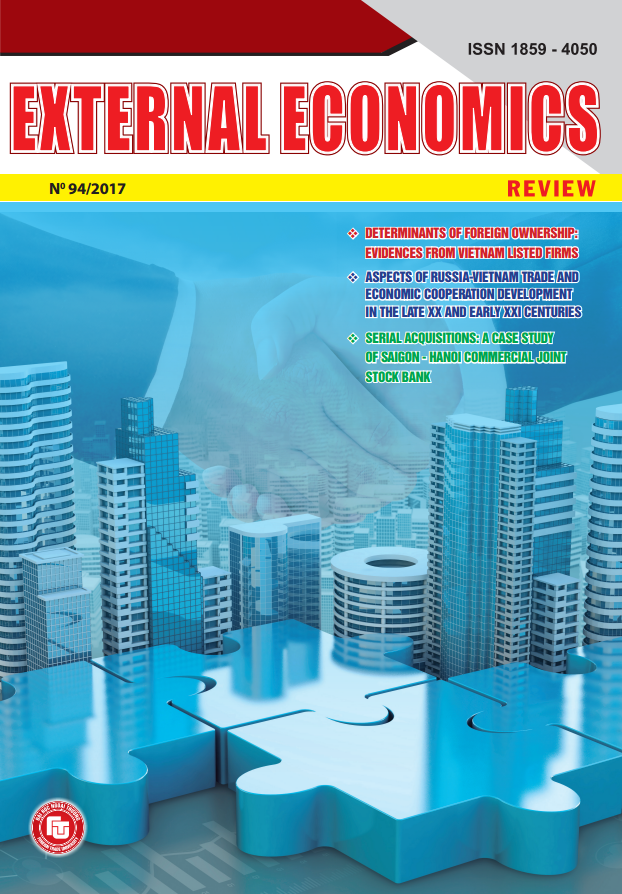MONEY DEMAND AND THE WELFARE COST OF INFLATION: EMPIRICAL EVIDENCE FROM EAST ASIAN COUNTRIES
Nguyen Anh Tuan, Nguyen Thanh Luan
Abstract
Abstract: This article presents empirical evidence of the long-term relationship between money (M1) and inflation from five selected East Asian countries during the period from 1977–2014. The two money demand specifications, namely, the semi-log and the log-log functional forms initiated by Cagan (1956) and Meltzer (1963), respectively, are examined using time-varying and structural break tests for stationary and cointegration before estimating cointegration equations with ordinary least squares (OLS) regression. In addition to estimating the money demand function, the welfare cost of inflation is calculated following Bailey’s (1956) consumer surplus approach. Results indicate that there is an insignificant effect of inflation in the five countries, as well as in comparison to existing studies. On the other hand, there is a distinction between the two specifications, with the log-log form often producing more consistent and reasonable results.
Keywords: Money demand, Welfare cost of Inflation, Time-series, Structural breaks, Consumer surplus, East-Asia countries.

